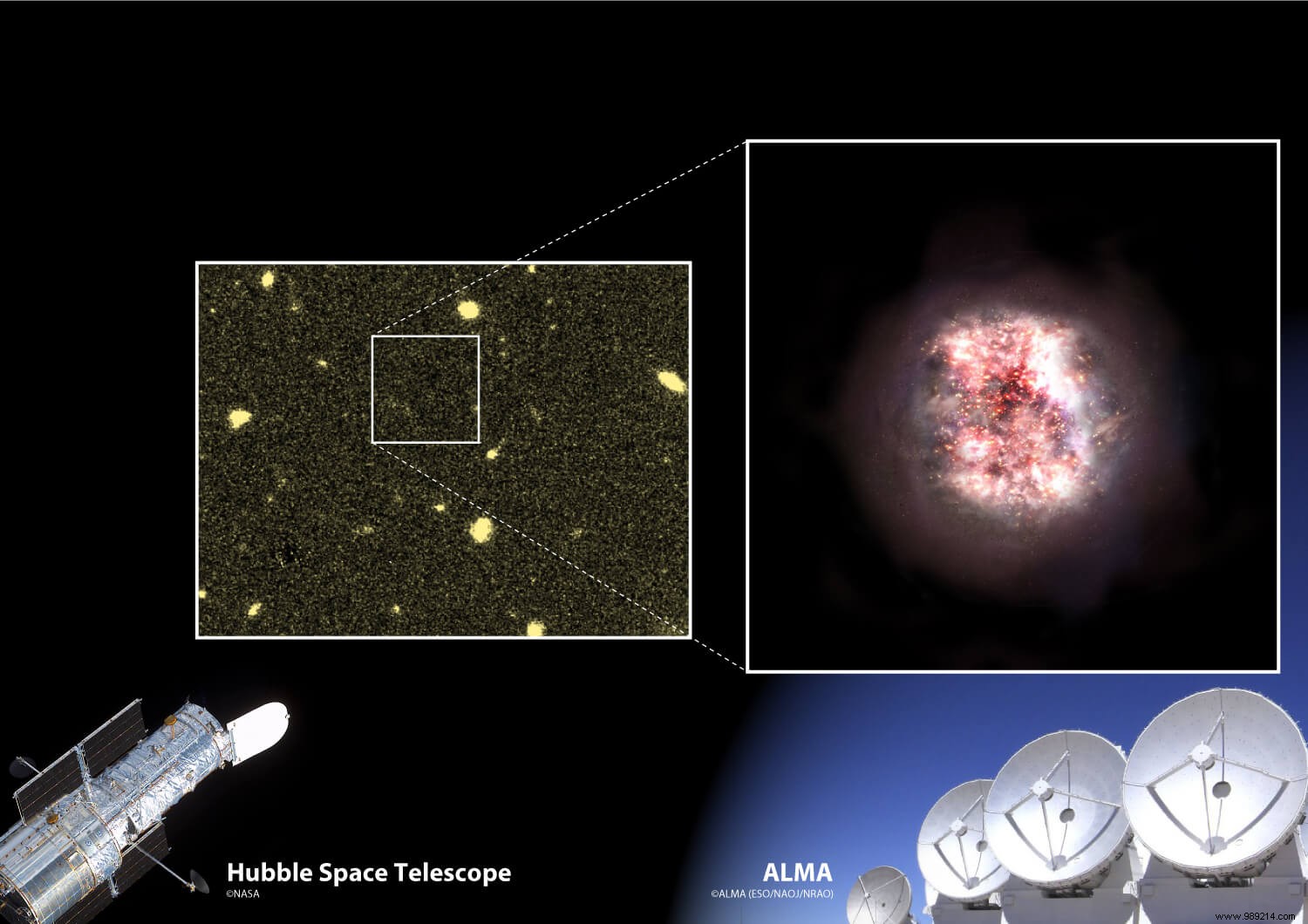Astronomers from the University of Copenhagen announce that they have isolated two previously "invisible" galaxies more than thirteen billion light-years away nestled behind veils of dust. To perceive them, the researchers relied on radio waves. This new discovery suggests that the early Universe contains many more galaxies than previously thought.
The Hubble Telescope is capable of deep probing into the Universe, allowing astronomers to effectively travel back in time to its infancy. However, Hubble can't see everything, surveying the sky primarily in ultraviolet and visible light wavelengths. Other instruments calibrated to focus on other wavelengths can, however, complete the work of Hubble, thus sometimes revealing new unsuspected details. That is exactly what happened here.
“We were looking at a sample of very distant galaxies, which we already knew existed thanks to the Hubble Space Telescope “, explains Pascal Oesch, from the University of Copenhagen. "And then we noticed that two of them had a neighbor we didn't know existed. As these two galaxies are surrounded by dust, part of their light is indeed blocked, which makes them invisible to the eyes of Hubble “.
For this work, the researchers relied on the large millimetric antenna array of Atacama (ALMA), Chile, which specializes in capturing radio waves.
These two galaxies were named REBELS-12-2 and REBELS-29-2 . Note that while their light has traveled a little over thirteen billion years to reach us, they are actually much further away. Taking into account the rate of expansion of the Universe, the researchers estimate that these two galaxies are now evolving more than 29 billion light years from Earth .

The team also calculated that between 10 and 20% of galaxies from that distant era , known as "reionization of the universe", could hide behind similar veils of dust. Simply put, this new study suggests that the very first Universe contains many more galaxies than previously thought .
"We're trying to solve the big puzzle of the formation of the Universe and answer the most fundamental question:where did all this matter come from? ? “, continues the astronomer. “Our discovery demonstrates that up to one in five of the earliest galaxies may have disappeared from our star map. Before we can begin to understand when and how galaxies formed, we first need proper accounting “.
To operate, astronomers will soon be able to count on a new ally:the James Webb Telescope, specialized in infrared, whose launch is scheduled for December 22nd . This highly anticipated observatory will be able to "see" through these veils of cosmic dust and probe even deeper into the Universe.
Details of this study are published in Nature.